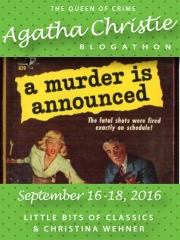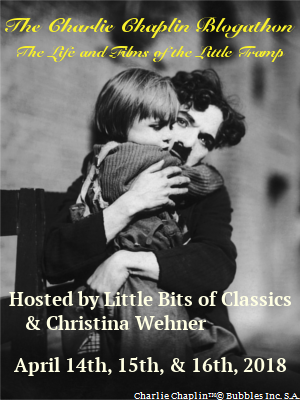When Ray Harryhausen and his producers were working on the story for The Beast From 20,000 Fathoms, they discovered that their story was very similar to Ray Bradbury’s short story, The Fog Horn,” published in 1952. There seems to be some confusion about exactly how this happened. Bradbury said they had been inspired by his story, but forgotten that it was his story that inspired them. When he pointed this out, they promptly bought the rights to “The Fog Horn” and marketed the film as being based on his story. However, Ray Harryhausen said that while they were working on the story, they saw an image of a dinosaur attacking a lighthouse and they thought it would be a good idea to incorporate that into their script, and so bought the rights to Bradbury’s “The Fog Horn.”
However it happened, there is only one scene in the movie that is based on the short story, which only consists of one main event. I’m afraid Ray Bradbury’s story sounds a bit silly in a dry retelling, but there is nothing silly in the actual reading. It’s actually rather poignant.
Two men work in a lighthouse, one a younger man, Johnny, new at the job and another old-timer, McDunn, who is given to musing about the mysteries of the deep sea. As the fog horn of their lighthouse mournfully calls out one night, McDunn talks about how ancient the bottom of the ocean is compared to the land.
For all our engines and so-called submarines, it’ll be ten thousand centuries before we set foot on the real bottom of the sunken lands, in the fairy kingdom there, and know real terror. Think of it, it’s still the year 300,000. Before Christ down under there. While we’ve paraded around with trumpets, lopping off each other’s countries and heads, they have been living beneath the sea twelve miles deep and cold in a time as old as the beard if a comet.
But in some way, the fog horn has an affinity with that ancient world, with its mournful call and a creature (the last of its kind?) responds by visiting each year and calling back to the lighthouse as if it was its long-lost love.
A cry came across a million years of water and mist. A cry so anguished and alone that it shuddered in my head and my body. The monster cried out at the tower. The Fog Horn blew. The monster roared again. The Fog Horn blew. The monster opened its great toothed mouth and the sound that came from it was the sound of the Fog Horn itself. Lonely and vast and far away. The sound of isolation, a viewless sea, a cold night, apartness. That was the sound.
Not even Harryhausen’s monster was that sad! And when the fog horn is turned off briefly, the monster destroys the lighthouse in a fit of rage. Fortunately, Johnny and McDunn escape alive. But the monster is never seen again.
I’m not sure if I would have made the connection between the movie and the short story if I hadn’t known they were connected. The tone is completely different. The short story admirably calls up a sense of vastness, ancientness and loneliness. This was my first time reading Bradbury and his ability to create an atmosphere that hangs heavy over a mere nine pages is remarkable. I can sometimes have trouble focusing on a book when there is other noise or people around, but even in a waiting room I still felt like I was set amidst that vast loneliness and hearing that monster call – no mean feat.
The Murderer
After I read “The Fog Horn,” I was flipping through the collection – Classic Stories 1: From The Golden Apples of the Sun and R Is For Rocket – and read a few more short stories, including one that tickled my fancy. “The Murderer” was written in 1953, but is set in some distant time where radios are ubiquitous, including the wrist radio (used like a cellphone), and tell you what to do (rather like a GPS devise) and music is playing constantly in offices and on buses and houses remind you to wipe your feet. The noise is incessant, but most people hardly notice. They are too busy on their wrist radios, calling others to remind them about something or tell them about every trivial little thing.
Hmm….sounds familiar.
The story encompasses an encounter between a psychiatrist and a man under arrest who is being evaluated. The man, Albert Brock, was arrested for the “murder” of electronic objects…anything that made noise. His first crime was committed against his telephone, which he sent down the “insinkerator.” Next he “shot the television set.” He goes on to pour French chocolate ice cream into the radio transmitter of his car. He then goes to work on his house, which is
one of those talking, singing, humming, weather-reporting, poetry-reading, novel-reciting, jingle-jangling, rockaby-crooning-when-you-go-to-bed houses. A house that screams opera to you in the shower and teaches you Spanish in your sleep…with stoves that say, “I’m apricot pie, and I’m done,’ or ‘I’m prime roast beef, so baste me!”…With beds that rock you to sleep and shake you awake. A house that barely tolerates humans…A front door that barks: ‘You’ve mud on your feet,sir!” And an electronic vacuum hound that snuffle around after you from room to room, inhaling every fingernail or ash you drop.
Brock systematically went through the house and killed everything that made a sound. The trouble is that he was only renting all these things.
His reasons for these crimes? He wants to “deliver” man from “conveniences” and the incessant noise. The demands that technology seemingly makes on people. The feeling that because there is a phone, therefore it must be used. The sudden need people feel to share every little thing, so that they can feel “in touch.” How people sit on the bus and give updates on their location. How music plays nonstop.
In touch! There’s a slimy phrase. Touch, hell. Gripped! Pawed, rather. Mauled and massaged and pounded…
It was only 1953 when Bradbury was writing, but he perfectly describes the social media/cellphone revolution.
My brother noticed it especially in 2007, when the iPhone became ubiquitous on the college campus When he first went to university, he had to take a bus and everyone on the bus either read or talked to their neighbor. In 2007, that all changed. Suddenly, everyone on the bus had an iPhone and would sit with head bowed over it. Almost like homage payed to a deity.
By the end of the story, one can’t help but feel that it is the psychiatrist – and everyone else – who is sick and that Brock is the only sane man around. The doctor says Brock “refuses to accept the simplest realities of his environment and work with them,” but perhaps Brock has a point that such things ought to be fought against. Maybe we should all turn into Luddites and run around murdering technology.
Except then I couldn’t blog…










